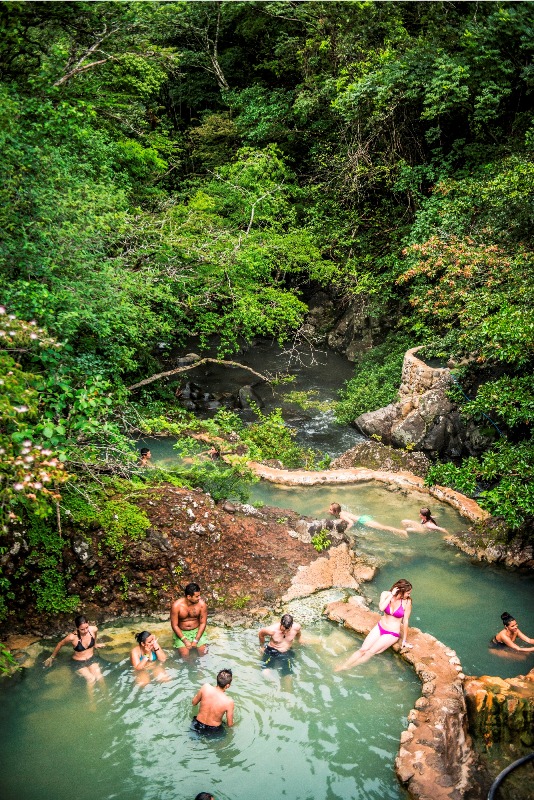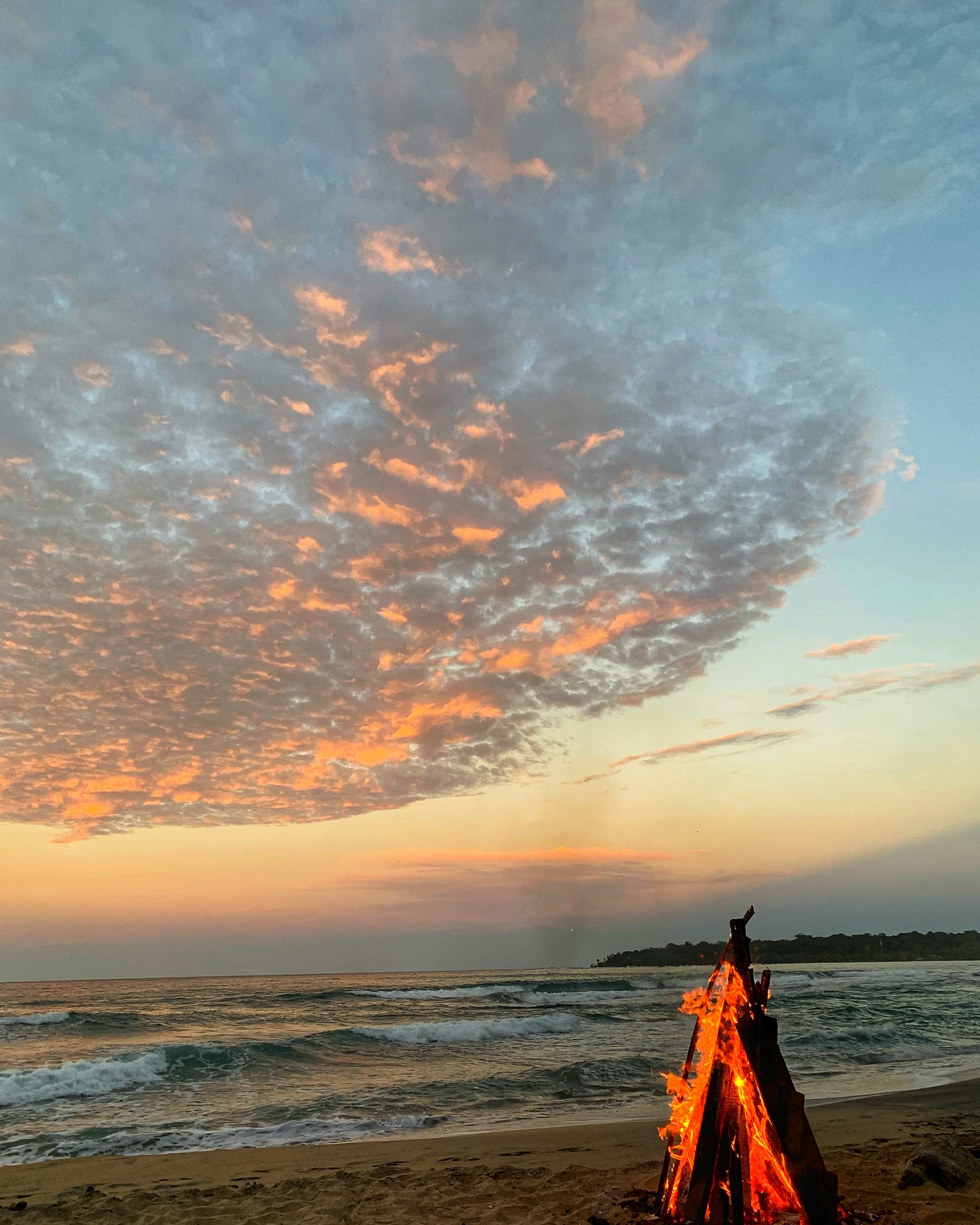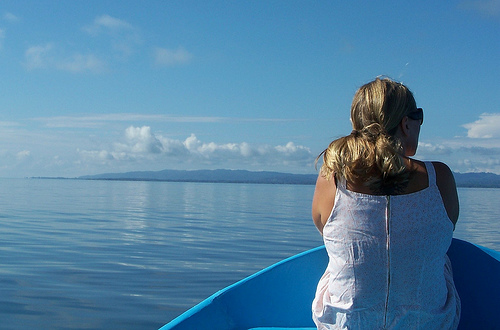Costa Rica is a true paradise for wildlife lovers, with a variety of incredible creatures calling the country home. Thanks to its many forests and protected areas, many animals have decided to live here permanently, and others migrate yearly to its mountains, rainforests, coastal areas and islands. So, yes, you can see some amazing wildlife migrations in Costa Rica! Which are they? How about humpback whales, sea turtles, and migratory birds? Each year, these incredible animals make their way to Costa Rica to breed, nest, or simply enjoy the country’s warm waters and lush landscapes.
Costa Rica has a rich and diverse array of natural wonders, from its lush rainforests and stunning beaches to its unique wildlife and marine ecosystems. One of the most fascinating aspects of Costa Rica’s natural world is its migratory species, including humpback whales, sea turtles, and various bird species. In this blog post, we will take a closer look at these migratory species and explore their unique and awe-inspiring journeys each year. Rancho Humo Estancia an Enchanting Hotel of Costa Rica, invites you to enjoy the amazing wildlife migrations to Costa Rica!
Rancho Humo Estancia sits on the Nicoya Peninsula where these three migrations can be seen and experienced and are worthy of living. During humpback whale and sea turtle migrations on the Pacific Ocean’s shores, bird migrations are front and center at Rancho Humo. While the countless birdlife can be enjoyed from the comfort and privacy of your room´s veranda, the beach is not far away. This means you get to enjoy the best of all the migrations during your stay at Rancho Humo.
The Pacific coast of Costa Rica, including the province of Guanacaste, is a prime location for humpback whale migrations. Every year, these massive marine mammals travel thousands of miles from their feeding grounds in the chilly waters of the Southern Hemisphere to the warm waters of Central America to mate, give birth, and nurse their young. The migration season typically lasts from July to November, offering visitors a unique and unforgettable opportunity to witness these majestic creatures in their natural habitat.
Costa Rica is a true paradise for birdwatchers, with over 900 species of birds that can be found throughout the country. Among these, many are migratory, arriving in Costa Rica from North America and other regions to breed, nest, or spend the winter. Rancho Humo Estancia is the perfect place to observe many of these birds as they feed, breed and nest in the protected wetlands, tropical dry forest and river banks around the Palo Verde National Park and its surrounding.
Costa Rica is also a critical nesting site for several species of sea turtles, including the olive ridley, green, leatherback, and hawksbill turtles. These turtles undertake incredible migrations that take them across vast distances and challenging terrain, including beaches, oceans, and currents.
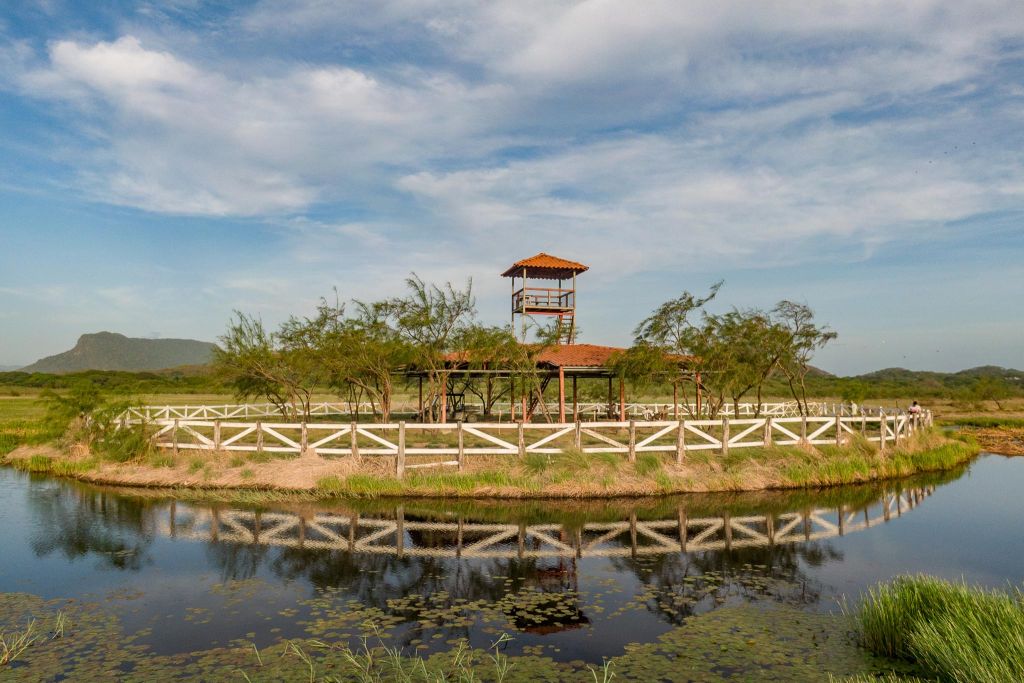
HUMPBACK WHALE MIGRATIONS
Every year, humpback whales embark on a long and arduous journey from the chilly waters of the North and South Pole to the warm and tropical waters of the Pacific coast of Costa Rica. These magnificent creatures can travel over 6,000 miles in a single migration, navigating by the stars and the earth’s magnetic field to reach their destination.
The humpback whale migration is an incredible sight to behold, with the whales traveling in large groups or “pods” and engaging in various behaviors, including breaching, tail slapping, and singing. The breeding and birthing season for humpback whales in Costa Rica runs from July to November, and during this time, visitors to the country can witness these majestic creatures up close on a whale watching tour.
Humpback whales are known for their acrobatic displays, often leaping out of the water or slapping their tails on the surface in a behavior called “breaching.” They can be seen swimming and playing in groups, known as pods, and even singing complex and beautiful songs that can travel for miles underwater. For visitors, watching these impressive displays is a once-in-a-lifetime experience.
Guanacaste and the Pacific coast of Costa Rica offer multiple opportunities for visitors to witness humpback whale migrations. One of the best ways to see the whales is by taking a guided boat tour, allowing visitors to get up close and personal with these magnificent creatures while maintaining a safe distance. These tours are led by experienced guides who know the best spots for whale watching and can provide fascinating insights into the behavior and biology of humpback whales.
Another popular way to see humpback whales is by taking a scenic flight over the Pacific coast. This provides a bird’s-eye view of the whales as they migrate and allows visitors to see the full scale of these impressive creatures as they breach and swim in the warm waters below.
The humpback whale migrations in Guanacaste and the Pacific coast of Costa Rica are an important part of the region’s ecosystem, and a fascinating example of the natural cycles of the ocean. Visitors can gain a deeper understanding and appreciation of the natural world by witnessing these migrations. They can contribute to the ongoing efforts to protect these incredible creatures and their habitats.
In addition to the humpback whales, visitors to the Pacific coast of Costa Rica can also witness other species of marine mammals, including dolphins, killer whales, and sea turtles. This makes the area a prime destination for nature lovers and wildlife enthusiasts, who can experience the unique and diverse ecosystems of the region both on land and at sea.
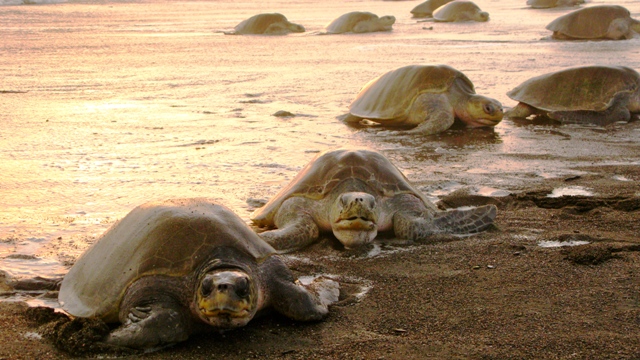
SEA TURTLE MIGRATION
Guanacaste is an important destination for sea turtles during their annual migrations. Every year, thousands of turtles travel to the beaches of Guanacaste to lay their eggs and hatch their young, making it a popular destination for tourists and nature lovers.
Four species of sea turtles can be found in Guanacaste: the Olive Ridley, the Green, the Hawksbill, and the Leatherback. Each species has a different nesting season and migratory pattern, offering visitors a unique and exciting experience.
OLIVE RIDLEY
The Olive Ridley turtle is the most common species found in Guanacaste, with a nesting season that typically runs from August to December. These turtles are known for their synchronized nesting behavior, with hundreds or even thousands of females coming ashore simultaneously to lay their eggs. Visitors can witness this incredible spectacle by taking a nighttime tour to the beaches where Olive Ridley turtles nest.
GREEN TURTLE
The Green turtle, which has a nesting season from July to October, is another common species found in Guanacaste. These turtles are known for their distinctive heart-shaped shells and can often be seen feeding in the shallow waters off the province’s beaches. Visitors can witness Green turtles laying their eggs by taking a guided tour of one of the many protected nesting areas along the coast.
HAWKSBILL
The Hawksbill turtle is a critically endangered species that is also found in Guanacaste, with a nesting season from June to November. These turtles are known for their strikingly beautiful shells, which are highly valued in the international market for their use in jewelry and other decorative items. Visitors can support the conservation efforts of these turtles by taking part in guided tours that educate them on the importance of protecting these endangered creatures.
LEATHERBACK
The Leatherback turtle is the largest of all sea turtle species and has a nesting season from October to March. These turtles are known for their ability to dive to incredible depths in search of food and can be seen swimming in the waters of Guanacaste’s beaches. Visitors can witness Leatherback turtles laying their eggs by taking a guided tour of the protected nesting areas along the coast.
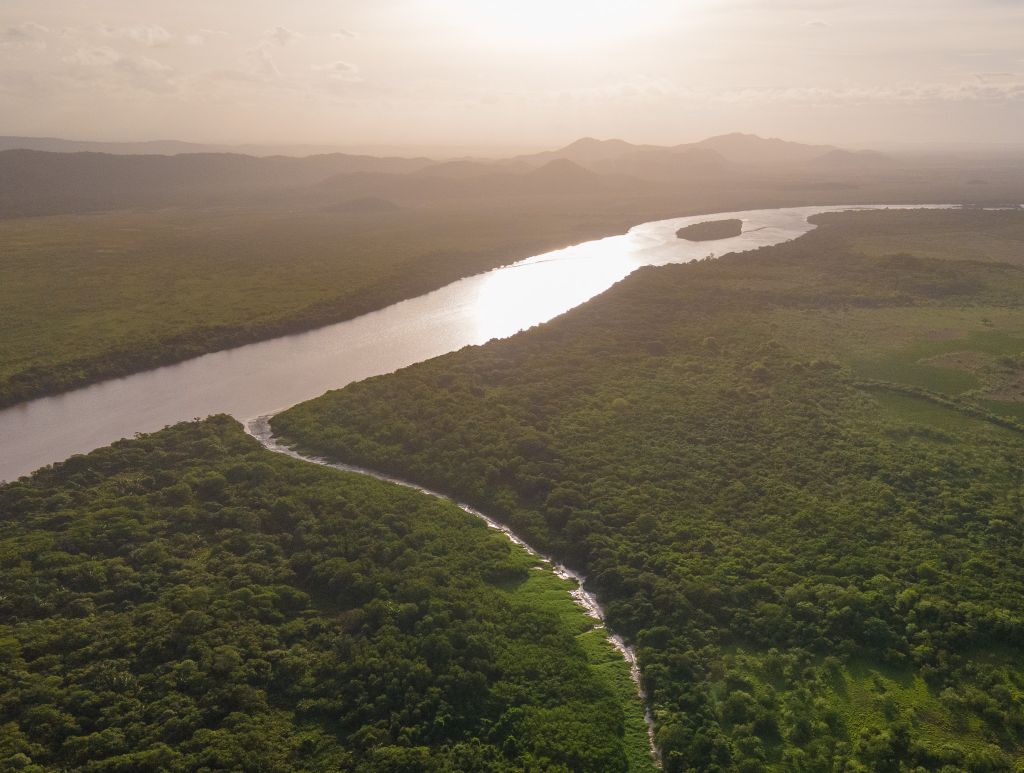
BIRD MIGRATIONS
Birdwatching is a popular activity in Costa Rica, and for a good reason. The country’s diverse ecosystems provide habitats for over 900 species of birds, many of which are migratory. Bird migrations to Costa Rica occur throughout the year, but the best time to see them is during the dry season from December to April.
One of the best regions in Costa Rica to see migratory birds is Guanacaste, a province located in the northwest of the country. Guanacaste is home to various ecosystems, including tropical dry forests, cloud forests, and mangrove swamps, which attract a wide range of bird species. Rancho Humo Estancia is a private reserve that protects extensive areas of tropical dry forests and wetlands guaranteeing a safe haven for many of the migratory and resident birds in Guanacaste.
Here are just some of the migratory birds that visit Guanacaste:
- The Wood Thrush, a medium-sized songbird with a distinctive reddish-brown back and spotted breast, can be spotted in Guanacaste. Wood Thrushes breed in eastern North America and migrate to Central and South America for the winter, where they can be seen in the forests and woodlands of Guanacaste.
- The Yellow Warbler is another migratory bird species that visit Guanacaste. This small, bright yellow bird breeds in North America and migrates to Central and South America for the winter, where it can be seen in the trees and bushes of the province’s forests and wetlands.
- One of the most impressive migratory birds that can be seen in Guanacaste is the Swainson’s Hawk. This large raptor breeds in North America and migrates to South America for the winter, passing through Central America on its journey. Swainson’s Hawks can be seen soaring high in the sky above Guanacaste during the dry season as they make their way south.
In addition to these migratory bird species, Guanacaste is home to various resident birds, including toucans, parrots, motmots, and trogons. These birds can be seen throughout the year, making Guanacaste a great destination for birdwatchers.
Several birdwatching tours and excursions are available to see migratory birds in Guanacaste. Many of these tours take visitors to areas such as Palo Verde National Park, Santa Rosa National Park, and the Rincon de la Vieja National Park, which are all rich in birdlife. Visitors can also explore the region’s many nature reserves and wildlife refuges, which provide opportunities to see both migratory and resident bird species. Rancho Humo Estancia borders the Palo Verde National Park, so you are in the perfect spot to enjoy the bird migration.
Overall, bird migrations to Guanacaste and Costa Rica offer a unique and unforgettable opportunity to observe a diverse range of bird species in their natural habitats. With its variety of ecosystems and rich birdlife, Guanacaste is a must-visit destination for birdwatchers and nature lovers alike.
So, which wildlife migration is your favorite? Why not come and see them all as each one is special. Rancho Humo Estancia from the Enchanting Hotels collection invites you to live their magic. See you in Guanacaste, Costa Rica!




